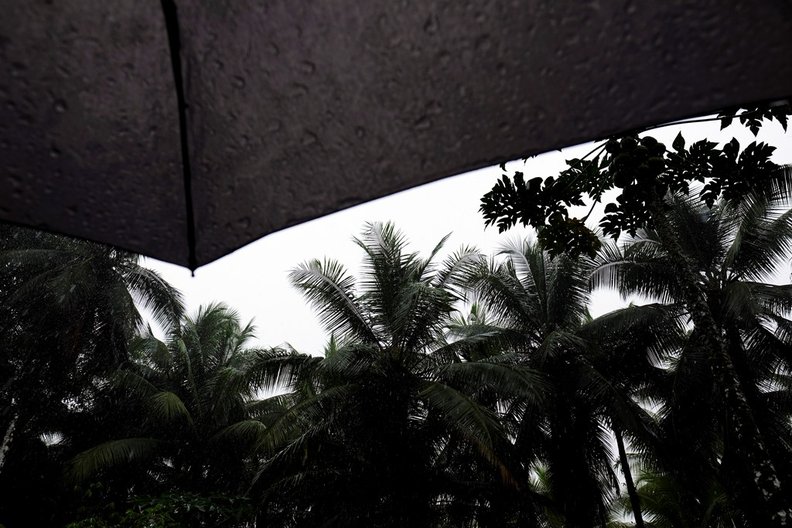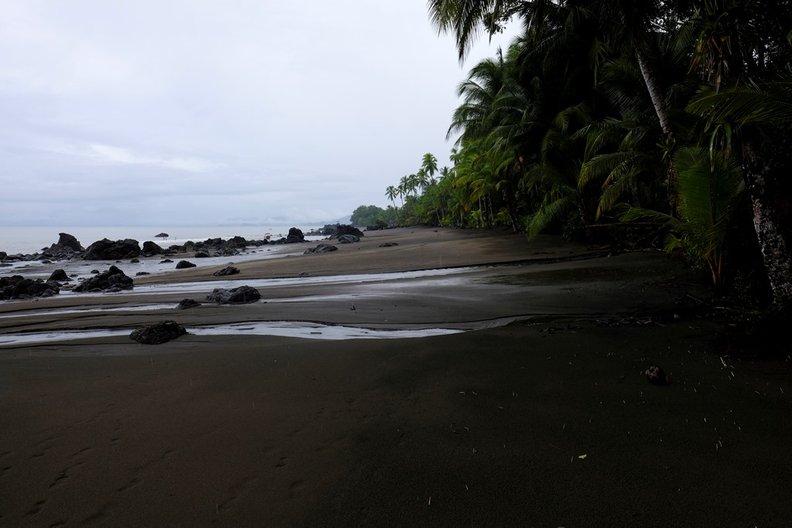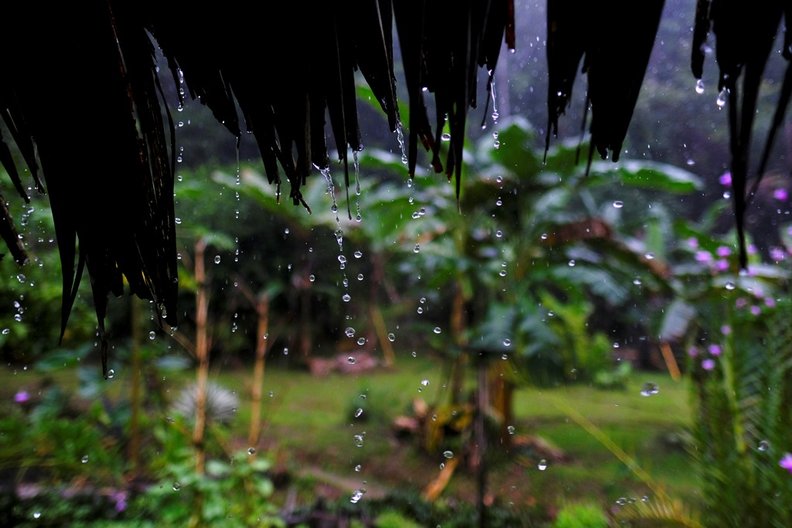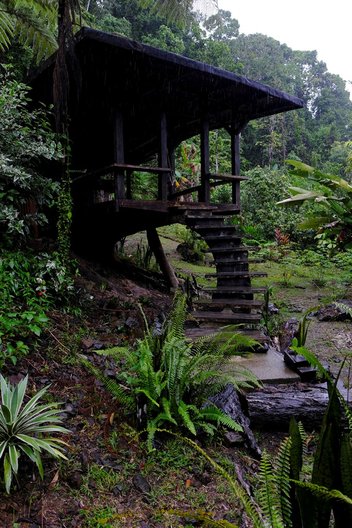6 October 2018
by Dominic Oliver Dudley
In his last blog post from Colombia, Rogelio Salmona Fellow, Dominic Oliver Dudley travels to wild Gulf of Tribugá and explores Salmona's relationship with nature and poetry
Guachalito
I have arrived at the wild Gulf of Tribugá. In front of me the dark sands of Guachalito beach stretch across the shoreline as far as I can see, before slipping into the vast seascape of the Colombian Pacific. Behind me the mountainous tropical jungle of Chocó hisses and hums, it’s cool streams and rivers mellowing as they emerge from the forest and fuse with the ocean. I am lying in a hammock, thinking about how I have arrived in this remote paradise and why I am here. There are no Rogelio Salmona buildings to be seen for miles, and here bricks are a rather strange thing. I am here to think.
I am staying in a wonky timber hut, though it is more considered than it sounds. Designed as a collaboration between my Colombian hosts, Más Arte Más Acción and Dutch artist Joep van Lieshout, the hut is structured around the bowed trunk of a substantial fallen tree, forming a spine of sorts across the length of the building. Bar the requisite flat surfaces for bed and table, nothing is level, the building's splayed surfaces instead following the natural curve of the tree. Steps and beams are notched into the trunk, running at short centres like the ribs of a boat. Timber columns to the front elevate the floor plate to tree trunk height, whilst the same columns to the rear are largely truncated as the building nestles into the hillside at the edge of the rainforest. It is a beautiful building though deliberately uneasy, its splayed planes, proximity to the forest and open design forcing me to confront the nature here. Jet black nights are populated with exotic jungle sounds I can't recognise, and do not necessarily want to. Sleep is deep but intermittent, often interspersed by mesmerising storms that bring torrential rain, booming thunder and electrifying sheets of light.
The narrow slice of territory between beach and jungle belongs to the palms, and it is perhaps where I end up spending most of my time thinking. The intermittent thud of falling coconuts punctuates periods of extended introspection, prompting me to tentatively look to the treetops, as if I could actually identify which one were going to fall next (I can’t). I navigate the potential projectiles overhead with ambling urban caution, skirting around the base of each palm in a meandering dance.
When I came to Colombia my intention was not only to investigate Salmona's use of brick, but to explore his fascination with poetry. Beyond establishing that Salmona did indeed indulge in an array of poetry, particularly French, and that he was almost always reading something, it has been surprisingly difficult to find out more. His tastes were broad and the impact on his architecture abstract, but it is here in this wilderness that I realise this train of thought is perhaps less about the authors, books and poems he pored over. Much as poetry can transcend the act of writing in its delicate arrangement, form and composure, architecture can transcend construction. For Salmona this was about engendering emotion, more often than not with nature. Whether weaving brick volumes around beautiful landscaped courtyards to make the inside outside, or carving holes in envelopes to bring the outside in, it is all about coexistence and continuity between the man-made and the natural. I could be nowhere more fitting to confront Colombian nature in all its wild poetic variety. As I swim one evening at sunset, I pause by Granny Island, mesmerised by the bright orange glow of the distant horizon. I lie back, surprised to find the moon out in the clear blue sky above me. I turn, towards the apocalyptic swirling black clouds ahead. The rain comes.
To find out more about the exciting residencies, fellowships and travel grants we offer head to our Opportunities page and follow us on Instagramand Twitter.
Category
Travelogue
Location
Colombia





